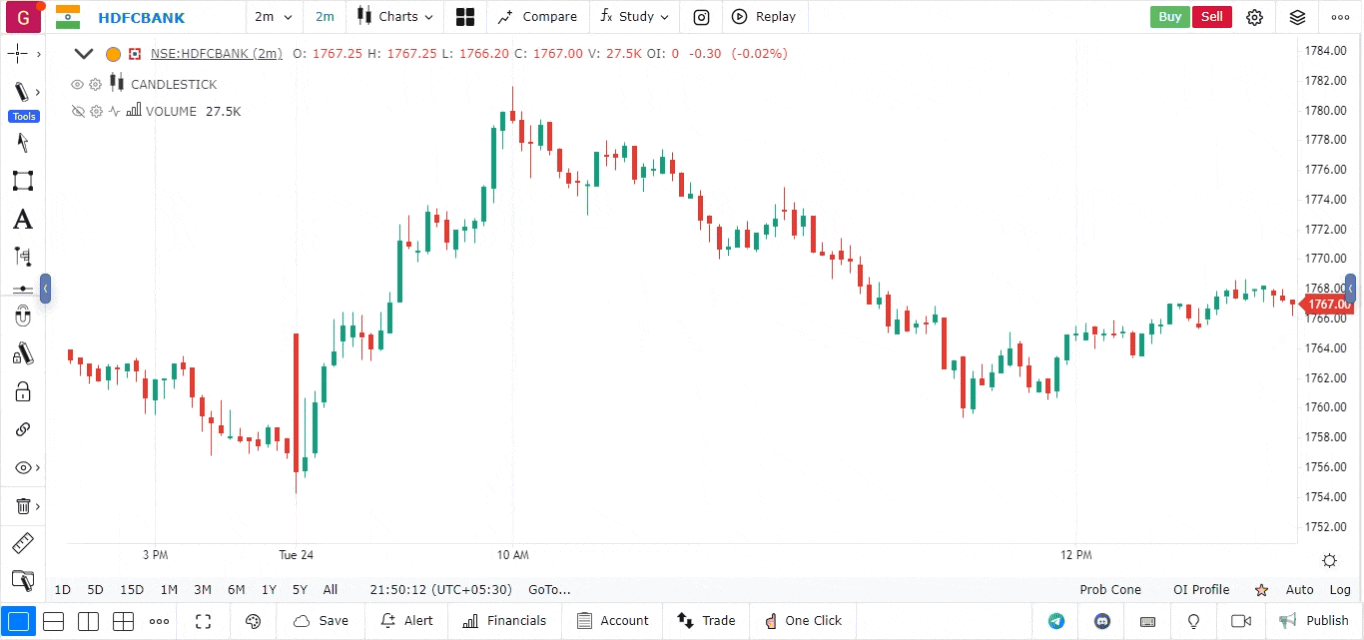Twiggs Money Flow Index (MFI)
The Twiggs Money Flow Index (MFI) is a volume-weighted momentum indicator that measures the buying and selling pressure of an asset over a specific period. It combines price and volume to assess whether an asset is overbought or oversold, helping traders identify potential trend reversals and continuation patterns.
Overview of the Twiggs Money Flow Index
- Purpose: The Twiggs MFI aims to provide insights into market trends by analyzing the relationship between price movements and trading volume.
- Market Analysis: By assessing the flow of money into and out of an asset, the Twiggs MFI helps traders make informed decisions about market strength and potential reversal points.
Key Features of the Twiggs Money Flow Index
- Volume-Weighted Calculation:
- The Twiggs MFI uses both price and volume in its calculation, providing a more comprehensive view of market dynamics than price alone.
- Indicator Scale:
- The Twiggs MFI is typically plotted on a scale ranging from -1 to +1. Values above +0.2 indicate overbought conditions, while values below -0.2 indicate oversold conditions.
- Trend Confirmation:
- A rising Twiggs MFI indicates increasing buying pressure, suggesting a bullish trend, while a declining Twiggs MFI indicates selling pressure, signaling a bearish trend.
How to Use the Twiggs Money Flow Index
-
Access the Indicators Section
- Click on the “Indicators” or “Studies” menu located at the top of the chart.
- Expand the list of available indicators and technical studies.
-
Find and Add the Twiggs Money Flow Index
- Search for Twiggs MFI: Enter “Twiggs Money Flow” or “MFI” in the search bar of the indicators list.
- Add the Indicator: Click on the Twiggs MFI indicator to add it to your chart. It will appear as a line graph in a separate panel below the main price chart.
-
Customize the Twiggs Money Flow Index Indicator
- Settings: Access the settings by right-clicking on the Twiggs MFI line or clicking on the settings icon.
- Adjust the period for the Twiggs MFI calculation (commonly set to 21 periods) to suit your trading strategy and the asset’s volatility.
- Customize the line color, style, and thickness according to your preferences.

-
Interpret the Twiggs Money Flow Index Signals
- Overbought Conditions: A Twiggs MFI reading above +0.2 suggests that the asset may be overbought, indicating a potential selling opportunity.
- Oversold Conditions: A Twiggs MFI reading below -0.2 suggests that the asset may be oversold, indicating a potential buying opportunity.
- Trend Confirmation: A rising Twiggs MFI supports a bullish trend, while a falling Twiggs MFI supports a bearish trend.
-
Make Trading Decisions Using the Twiggs Money Flow Index
- Divergence Analysis: Look for divergences between the Twiggs MFI and price action to identify potential reversals. For example, if prices are making new highs but the Twiggs MFI is not following suit, this may indicate weakening momentum.
- Volume Signals: Pay attention to volume trends in conjunction with the Twiggs MFI. A significant increase in volume alongside a rising MFI can reinforce the strength of a bullish trend.